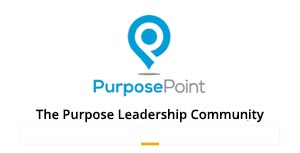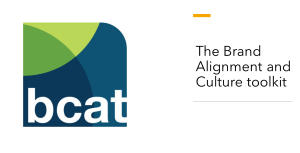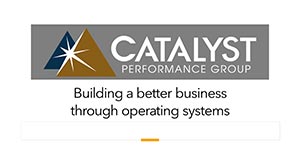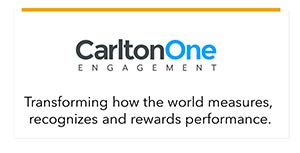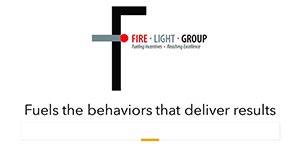How Stakeholder Management and Enterprise Engagement Can Revive a Struggling Church
.jpeg) This hypothetical case study demonstrates how stakeholder management principles can address problems in any type of organization. It embraces the same principles long practiced in total quality management (TQM) to harmonize the interests of all stakeholders toward a common purpose, goals, objectives, values, and metrics.
This hypothetical case study demonstrates how stakeholder management principles can address problems in any type of organization. It embraces the same principles long practiced in total quality management (TQM) to harmonize the interests of all stakeholders toward a common purpose, goals, objectives, values, and metrics.By Bruce Bolger
Executive Summary of the North Side Church Outreach Plan
Developing Shared Purpose, Goals and Values
Lessons for Any Leaders
Click here to subscribe to the ESM weekly e-newsletter.
Ever wonder why employee and customer engagement remain at record lows in the US and why many teams fail to effectively function? Obviously, something remains wrong with leadership: the way we manage organizations and get things done in many cases remains ad hoc and reactive without a clear purpose, goals, objectives, values, metrics, or system. The principles of stakeholder management, similar to TQM in manufacturing, provide a proven leadership framework based on harmonizing the interests of all stakeholders in a way that any organization or team can apply to achieve its purpose, goals, and objectives.
This hypothetical case study demonstrates how the process works in a not-for-profit setting. The process begins by first understanding the needs and interests of all stakeholders, what they have in common, then involving them or their representatives in the design of the strategy, tactics, and metrics and instituting a business operating system to keep the plan on track and to make improvements as needed.
This case illustrates that stakeholder alignment, shared purpose, and operating-system discipline are powerful in contexts far beyond business—they work wherever humans are trying to accomplish something together. Click here for a growing library of other applications of stakeholder management and enterprise engagement in business and personal life.
By coincidence, the CBS Eye on America series aired a segment on the growth of non-denominational churches on the same day this article was published.
Executive Summary of the North Side Church Outreach Plan
.png) A progressive Baptist church in a high-income US suburb—once active and socially influential—faced declining attendance, aging membership, disengaged volunteers, and an unclear mission. A new minister with an MBA applied stakeholder management and enterprise-engagement principles to realign the church around a new shared purpose, re-energize its community role, and rebuild participation.
A progressive Baptist church in a high-income US suburb—once active and socially influential—faced declining attendance, aging membership, disengaged volunteers, and an unclear mission. A new minister with an MBA applied stakeholder management and enterprise-engagement principles to realign the church around a new shared purpose, re-energize its community role, and rebuild participation.During her second service, she shared with the congregation her respect for the long history of the church and her commitment to restoring its leadership. She said the process would start by listening to all stakeholders and then working with the board to come up with a purpose, goals, objectives, metrics and clear plan she would share in a few months after they completed the process.
Founded nearly 80 years ago, North Side Baptist Church once had over 2,000 active members, with 20% showing up for the average service. By the time the new minister arrived:
- Average attendance had dwindled to 50 or 60 people.
- Volunteers were fatigued and uncoordinated.
- The board had no unified mission or clear goals.
- Donors were tired of supporting one-off repairs and stopgap needs.
- The broader community was fragmented with many unaware of the diverse resources in the community for social services, professional or personal development, the arts, walking, card game and other groups.
- Younger residents had little interest in traditional worship formats.
- The church lacked a compelling story or purpose beyond maintaining the faith and its operations.
Recognizing that the church’s challenges mirrored those of declining religious organizations everywhere, the minister launched a structured stakeholder-management evaluation process involving in depth discussions with all stakeholders to better understand their mutual interests: all agreed on their desire to see the congregation restored to its former vitality; all sought to find more synergies between the various interests of stakeholders.
- Parishioners: Nostalgia for purpose; desire for community, energy, and relevance.
- Board: Fragmented goals; reactive management; fundraising fatigue but hopeful for a revival.
- Donors: Loyalty to the church’s history but no compelling vision for future support and hoping for a new burst of energy.
- Volunteers: Burnout; lack of direction and recognition; yet energized by faith and loyalty.
- Staff: Inefficient processes; unclear priorities, and eager for direction.
- Nonprofit tenants: Satisfied with the office space but feeling disconnected from each other, that they could potentially do more together.
- Community: Prosperous and rich with talent but with little central connection outside of peoples’ own activities and circles with family, friends, schools, or institutions of other faiths.
- Institutional church elders: Supportive if the strategy were aligned with the church’s core values.
- Local businesses: Seeking brand exposure and authentic community connection.
Insight: No one stakeholder was causing the decline—the problem was misalignment and a lack of shared purpose. All stakeholders shared an enthusiasm for a new plan.
Developing Shared Purpose, Goals and Values 
Through interviews and a board retreat, the minister facilitated a structured discovery process asking the board to discuss three plans proposed by board members for the future.
1. A renewed political mission tapping the current partisan passions by focusing on its progressive past. The board rejected this as being divisive at a time when people seemed tired of divison.
2. A rejuvenation of the church’s hunger-focused mission building on its long traditions of helping the poor. This seemed tired.
3. A community-building mission grounded in the teachings of Jesus.
Consensus emerged around the third path—but ended up with one that emphasized practicing the teachings of Christ (especially the principle of the Golden Rule) rather than focusing only on the name of Jesus, belief or doctrine. The board agreed that using the Golden Rule might attract people disaffected from other churches or even religions.
The resulting mission statement:
“The Way Together: Connecting Our Community Through the Golden Rule”
Here’s an outline of the plan, which the minister put into the form of a concise business plan for the board, employees, and key donors.
Purpose: To help build a more connected, understanding, and vibrant community by practicing the universal principles of Jesus’s teachings, rather solely focusing on preaching them.
Goals and objectives:
- Design the worship order to more a participatory, experiential, and story-driven format to make the services more appealing, consistent with the freedom her denomination gave her in the worship rubric.
- Engage nonprofits, local businesses and the chamber of commerce, artists, educators, and other faiths to help build connections in the community and create sponsorship opportunities of mutual benefit.
- Strengthen community bonds by hosting collaborative fellowship hours in which everyone was welcome, regardless of faith.
- Develop and track clear metrics for attendance, engagement, sponsorship revenue, and partnerships.
Values: Inclusivity, shared benefits, connection, practice over preaching, community stewardship—living the ways of Jesus and the Golden Rule.
North Side Church Strategy and Operating System
The minister implemented a coordinated operating system involving all key leaders to implement the strategy.
1. Worship Innovation
- The minister introduced weekly themes with scriptural “stories.”
- Parishioners were invited in advance to offer short reflections on how teachings shaped their lives during services.
- Local musicians and guest artists were invited to participate weekly by the musical director and choir members.
- Interfaith speakers visited quarterly to share a core teaching or prayer, including the performance of one of its hymns or equivalent.
2. Community-Integrated Fellowship Hours

Instead of focusing on an annual fundraising program that required considerable time and resources, integrate events into Sunday fellowship hours by having them sponsored by a different nonprofit or business, offering:
- Short presentations of their services.
- Food tastings.
- Artistic demonstrations.
- Community-service info.
- Local crafts or small-business showcases.
3. Targeted Marketing and Partnerships
- Before the announcement of the new plan in public relations, the web site, newsletter and social media, the minister announced the program to the congregation before Thanksgiving, a few weeks before Christmas. This gave the board time to tweak any messaging. It was too soon to tell if the congregation understood it, but the buzz at fellowship hour suggested that people embraced anything that could restore the vitality of the church they cherished.
- A marketing intern built outreach lists and executed a social-media and e-newsletter plan that shared video clips of the services, activities, sponsors, etc. and highlighted the upcoming themes and fellowship hosts.
- A part-time fundraiser cultivated 100 organizations sponsors and partnerships, rather than trying to reach too many prospects unlikely to buy.
- The minister personally met with many potential sponsors over the course of the year.
- The church created a charity gift card that enabled donors to share with another charity of their choice. .
4. Structural Alignment
Every role—board, staff, volunteers—received clear objectives tied to their own purpose, goals, objectives related to:
- Community partnerships
- Worship participation
- Sponsorship development
- Office/auditorium space rental
The monthly operating-committee meetings reviewed progress, obstacles, and recommended course changes.
Results After One Year
- Attendance increased by 12% in the final quarter.
- $38,000 in net new revenue from fellowship sponsors, partners, and gift cards, including two more office rentals and increased auditorium space rental use.
- Online views tripled, increasing awareness and first-time visitors.
- New connections formed with the local Korean, South Asian, and Mexican business communities.
- A local nursery school created a Sunday kids’ program as a revenue-share partnership.
- The church established itself as a community connector, not just a place of worship.
- Local card and other game clubs started asking if they could use the meeting room space for a small donation.
- The board and congregation reported a renewed sense of mission and enthusiasm.
Lessons for Any Leaders
1. Stakeholder Management Works in Any Human System
Whether in a corporation or a congregation, aligning the interests of all stakeholders toward a common purpose, goals, objectives, and values unlocks energy and cooperation.
2. Purpose Drives Engagement
People rally around missions that are clear, inclusive, and emotionally meaningful.
3. Break Silos—and Build Connection
Nonprofits, businesses, cultural groups, and the church benefited from the ability to build more meaningful relationships in the community.
4. Consistent Operating Systems Beat One-Off Programs
Monthly check-ins, aligned roles, and measurable goals create sustainable momentum.
5. Leadership Is About Convening, Not Controlling
The minister did not impose a vision—she surfaced one through dialogue and shared ownership.
Enterprise Engagement Alliance Services
 Celebrating our 15th year, the Enterprise Engagement Alliance helps organizations enhance performance through:
Celebrating our 15th year, the Enterprise Engagement Alliance helps organizations enhance performance through:1. Information and marketing opportunities on stakeholder management and total rewards:
- ESM Weekly on stakeholder management since 2009. Click here to subscribe; click here for media kit.
- RRN Weekly on total rewards since 1996. Click here to subscribe; click here for media kit.
- EEA YouTube channel on enterprise engagement, human capital, and total rewards since 2020
 Management Academy to enhance future equity value for your organization.
Management Academy to enhance future equity value for your organization.3. Books on implementation: Enterprise Engagement for CEOs and Enterprise Engagement: The Roadmap.
4. Advisory services and research: Strategic guidance, learning and certification on stakeholder management, measurement, metrics, and corporate sustainability reporting.
5. Permission-based targeted business development to identify and build relationships with the people most likely to buy.
Contact: Bruce Bolger at TheICEE.org; 914-591-7600, ext. 230.







